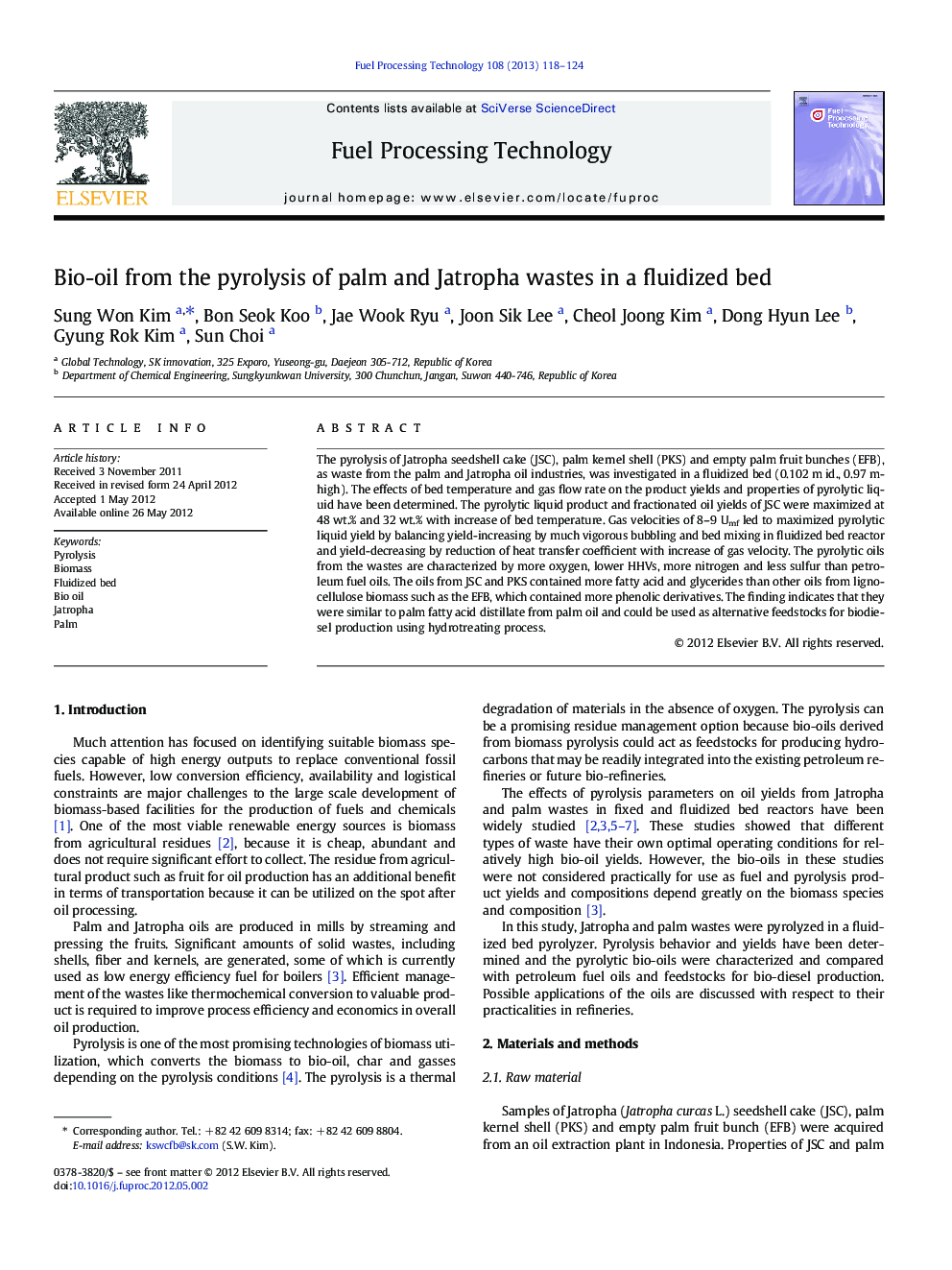| Article ID | Journal | Published Year | Pages | File Type |
|---|---|---|---|---|
| 210146 | Fuel Processing Technology | 2013 | 7 Pages |
The pyrolysis of Jatropha seedshell cake (JSC), palm kernel shell (PKS) and empty palm fruit bunches (EFB), as waste from the palm and Jatropha oil industries, was investigated in a fluidized bed (0.102 m id., 0.97 m-high). The effects of bed temperature and gas flow rate on the product yields and properties of pyrolytic liquid have been determined. The pyrolytic liquid product and fractionated oil yields of JSC were maximized at 48 wt.% and 32 wt.% with increase of bed temperature. Gas velocities of 8–9 Umf led to maximized pyrolytic liquid yield by balancing yield-increasing by much vigorous bubbling and bed mixing in fluidized bed reactor and yield-decreasing by reduction of heat transfer coefficient with increase of gas velocity. The pyrolytic oils from the wastes are characterized by more oxygen, lower HHVs, more nitrogen and less sulfur than petroleum fuel oils. The oils from JSC and PKS contained more fatty acid and glycerides than other oils from lignocellulose biomass such as the EFB, which contained more phenolic derivatives. The finding indicates that they were similar to palm fatty acid distillate from palm oil and could be used as alternative feedstocks for biodiesel production using hydrotreating process.
